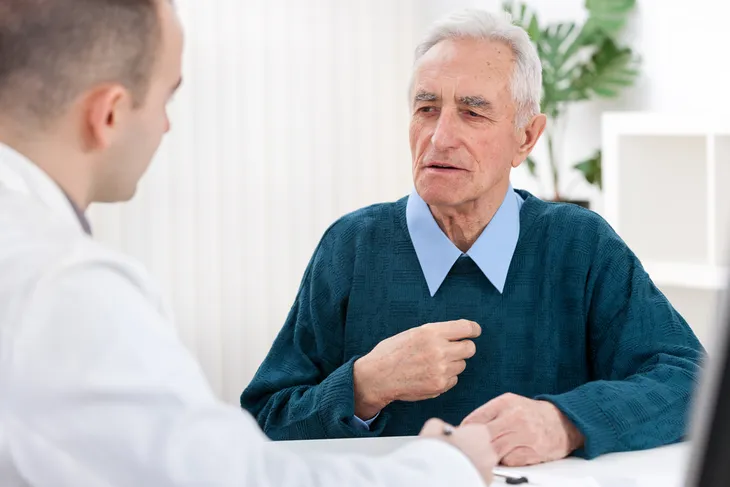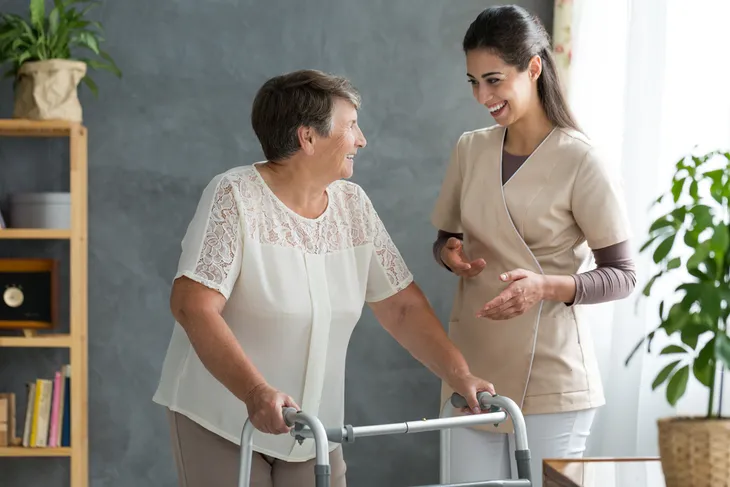Parkinson’s disease is a brain disorder that leads to tremors, stiffness, and difficulty with balance and coordination. About 60,000 Americans are diagnosed with Parkinson’s disease each year and more than 10 million people are currently living with it worldwide. Symptoms of this disease often begin gradually and worsen over time.
Since this disease is progressive, doctors often use a rating scale to assess the stage of Parkinson’s disease in an individual. One of the most commonly used scales is the Hoehn and Yahr scale (named after its authors). This scale is broken down into five stages to help doctors evaluate how far the disease has progressed. In this article, we explore the five stages of Parkinson’s disease, including what you can expect in each stage.
Common Symptoms of Parkinson’s Disease
Symptoms can vary from person to person, and they may even worsen as the disease progresses. But here are some of the most common symptoms of Parkinson’s disease to be on the lookout for:
- Uncontrollable tremors or shaking
- Slowed movement
- Rigid muscles
- Impaired posture and balance
- Speech and voice changes
Doctors will often use the Hoehn and Yahr rating scale to determine the progression of the disease. Let’s take a look at the five stages next.
Stage One of Parkinson’s Disease
If an individual is in stage one of Parkinson’s disease, the progression is considered mild. Individuals may experience some symptoms but they won’t be severe enough yet to interfere with their daily tasks. The symptoms can even be so minimal that they’re missed.
Be on the lookout for a change in posture, the way you walk, and your facial expressions. Another distinct symptom of stage one is tremors or movement challenges that are usually exclusive to one side of the body. The good news is at this stage some medications can help minimize or reduce the symptoms.
Stage Two of Parkinson’s Disease
Once an individual enters stage two, it’s considered as a moderate form of Parkinson’s disease. During this stage, the symptoms become more noticeable compared to stage one. Symptoms such as tremors, trembling, stiffness, and changes in facial expressions may happen and be more noticeable.
During stage two, individuals will generally feel the symptoms on both sides of the body. The good news is many individuals can still live alone during this stage, however, some activities may take longer than usual. Healthline also explains, “The progression from stage 1 to stage 2 can take months or even years. And there is no way to predict individual progression.”
Stage Three of Parkinson’s Disease
Stage three is a critical time in the progression of the disease. An individual will likely experience the same symptoms as stage two. However, now they are also more likely to experience a decrease in reflexes, and a loss of balance.
Furthermore, individuals may also move more slowly during this stage, which can increase the risk of falling. Unfortunately, during stage three, the disease will likely significantly affect your daily tasks. Thankfully, a combination of medication and occupational therapy may be able to help decrease the symptoms.
Stage Four of Parkinson’s Disease
By stage four, the disease has progressed far enough that an individual may require a walker or another type of assistive device. Although, individuals may be able to stand without assistance.
During this stage, most individuals are unable to live alone. This is because the progression of the disease can cause significant loss in movement and reaction times. Not only will normal daily tasks be very hard to manage alone, but they could even be dangerous for the individual.
Stage Five of Parkinson’s Disease
Stage five is considered the most advanced stage of the disease. Individuals in this stage often require wheelchairs because standing and walking on their own is impossible. This is because of advanced stiffness in the legs. It’s also important for the individual to have constant assistance to prevent falls.
Individuals in stages four and five may also experience confusion, hallucinations, and delusions. Dementia is common too. In fact, about 50 to 80-percent of people with Parkinson’s disease will experience dementia. Unfortunately, medication won’t help much at this stage as the side effects can often outweigh the benefits.
Non-Motor Symptoms Associated With Parkinson’s Disease
Changes in motor symptoms, such as muscle stiffness can help a doctor determine the progression of Parkinson’s disease. That said, several non-motor symptoms are also common with this disease.
These symptoms include cognitive changes, such as difficulty with memory or slowing of thought. Mood disorders such as depression and anxiety, can also be a symptom of Parkinson’s disease.
Other non-motor symptoms include sleep disorders, fatigue, vision problems, constipation, speech problems, and difficulty with sense of smell. These symptoms can also get worse as the disease progresses, and they may require additional treatment.
Is Parkinson’s Disease Fatal?
Parkinson’s disease is not fatal itself, however, complications that come with the disease can be serious. For example, some injuries caused by falling or issues associated with dementia can be fatal.
Furthermore, some people who have Parkinson’s disease may experience difficulty swallowing. This may lead to aspiration pneumonia, which is a condition that causes food or other foreign objects to be inhaled into the lungs.
When To See a Doctor
If you’re experiencing any of the main symptoms of Parkinson’s disease such as tremors, slow movement, or balance problems, you should speak with your doctor. You should also speak with your doctor if you’re noticing changes in your daily tasks such as trouble buttoning a shirt or loss of smell. While these signs don’t always indicate Parkinson’s disease, it’s a good idea to at least rule it out.
Your time with your doctor is limited so make sure you come to your appointment prepared. For example, you’ll want to write down all of the symptoms you’re experiencing as well as any recent life changes or major stresses. You’ll also want to inform your doctor of current medications and write down any questions you have for them.
After talking with your doctor, they’ll be able to determine what the next steps are.
What To Do About Parkinson’s Disease
Unfortunately, there currently is no cure for Parkinson’s disease. However, there are a variety of treatments available that may be able to help reduce the symptoms and maintain quality of life. Some of these treatments include supportive therapies, such as physiotherapy, and medication.
The best way to prompt earlier detection is to understand both the motor and non-motor symptoms of Parkinson’s disease. Early detection will help you get earlier treatment and ultimately improve your quality of life.













